
DOC023.97.80521
SC1500 Controller
01/2019, Edition 7
User Manual
Manuel de l'utilisateur
Manual del usuario
用户手册

English..............................................................................................................................3
Français......................................................................................................................... 23
Español.......................................................................................................................... 45
中文................................................................................................................................. 67
2

Table of contents
Specifications on page 3 Operation on page 20
General information on page 4 Maintenance on page 20
Installation on page 6 Troubleshooting on page 21
Startup on page 20 Accessories on page 21
Specifications
Specifications are subject to change without notice.
Specification Details
Dimensions (W x D x H) Controller: 315 x 120 x 242 mm (12.28 x 4.68 x 9.5 in.)
USB box: 79.5 x 55.1 x 159.5 mm (3.13 x 2.17 x 6.28 in.)
Enclosure Controller: Metal with corrosion-resistant surface, NEMA 4X/IP65 rating
USB box: ABS/polycarbonate, NEMA 4X/IP65 rating
Weight Approximately 5 kg (11 lb). Weight varies by model.
Pollution degree 2
Over voltage category II
Protection class I
Power requirements 100 to 240 VAC ± 10 VAC, 50/60 Hz, 1000 VA maximum
Fuse F1 and F2: M 3.5 A L, 250 V or T 3.15 A L, 250 V; F3 and F4: T 8 A H, 250 V
Operating temperature –20 to 55 °C (–4 to 131 °F)
Storage temperature –20 to 70 °C (–4 to 158 °F)
Humidity 95% relative humidity, non-condensing
Altitude 2000 m (6561 ft)
Measurement device
connections
Two, four or six device connectors and two AC power outlets
1
Network connections Two Ethernet connectors (10/100 Mbps), switch function, M12 female D-coding
connector
One USB connector in a USB box
Relay card (optional) Four relays on each relay card, change over contacts (SPDT)
Maximum switching voltage: 250 VAC, 125 VDC
Maximum switching current: 5 A
Note: Make sure to install the 5 A external breaker.
Maximum switching power: 1500 VA, 250 VAC; 625 W, 125 VDC
Wire gauge: 1.5 mm
2
(15 AWG) maximum
Analog output card (optional)
Four 4–20 mA analog outputs on each analog output card, 500 Ω maximum
Wire gauge: 1.5 mm
2
(15 AWG) maximum
The manufacturer recommends that signal cables with a shield are used.
Certification cTUVus compliant, CE compliant, DIN EN 61326 surge protection
Warranty 1 year (EU: 2 years)
1
The AC power outlets only supply power when the instrument has the optional 100 to 240 VAC
power supply.
English 3

General information
In no event will the manufacturer be liable for direct, indirect, special, incidental or consequential
damages resulting from any defect or omission in this manual. The manufacturer reserves the right to
make changes in this manual and the products it describes at any time, without notice or obligation.
Revised editions are found on the manufacturer’s website.
Safety information
N O T I C E
The manufacturer is not responsible for any damages due to misapplication or misuse of this product including,
without limitation, direct, incidental and consequential damages, and disclaims such damages to the full extent
permitted under applicable law. The user is solely responsible to identify critical application risks and install
appropriate mechanisms to protect processes during a possible equipment malfunction.
Please read this entire manual before unpacking, setting up or operating this equipment. Pay
attention to all danger and caution statements. Failure to do so could result in serious injury to the
operator or damage to the equipment.
Make sure that the protection provided by this equipment is not impaired. Do not use or install this
equipment in any manner other than that specified in this manual.
Use of hazard information
D A N G E R
Indicates a potentially or imminently hazardous situation which, if not avoided, will result in death or serious injury.
W A R N I N G
Indicates a potentially or imminently hazardous situation which, if not avoided, could result in death or serious
injury.
C A U T I O N
Indicates a potentially hazardous situation that may result in minor or moderate injury.
N O T I C E
Indicates a situation which, if not avoided, may cause damage to the instrument. Information that requires special
emphasis.
Precautionary labels
Read all labels and tags attached to the instrument. Personal injury or damage to the instrument
could occur if not observed. A symbol on the instrument is referenced in the manual with a
precautionary statement.
This is the safety alert symbol. Obey all safety messages that follow this symbol to avoid potential
injury. If on the instrument, refer to the instruction manual for operation or safety information.
This symbol indicates that a risk of electrical shock and/or electrocution exists.
This symbol indicates the presence of devices sensitive to Electro-static Discharge (ESD) and
indicates that care must be taken to prevent damage with the equipment.
Electrical equipment marked with this symbol may not be disposed of in European domestic or public
disposal systems. Return old or end-of-life equipment to the manufacturer for disposal at no charge to
the user.
4 English

This symbol, when noted on the product, identifies the location of a fuse or current limiting device.
This symbol indicates that the marked item requires a protective earth connection. If the instrument is
not supplied with a ground plug on a cord, make the protective earth connection to the protective
conductor terminal.
Product overview
N O T I C E
Network and access point security is the responsibility of the customer that uses the wireless instrument. The
manufacturer will not be liable for any damages, inclusive however not limited to indirect, special, consequential
or incidental damages, that have been caused by a gap in, or breach of network security.
The sc1500 is a controller for digital analytical devices (e.g., sensors and analyzers). Refer to
Figure 1.
The controller is available with optional relays and analog outputs (4–20 mA). The optional relays are
used to control external devices (e.g., control devices and alarm devices). The optional analog
outputs are used to supply measurement values to external devices.
The controller is configured and operated with a mobile application on a customer-supplied iOS
®
or
an Android
®
device with an internet browser that is connected to the internet. The controller
communicates on a LAN, Wi-Fi or cellular network.
Figure 1 Product overview
1 USB connector (refer to Connect to a cellular
network on page 18)
5 Wall mounting slots
2 USB box 6 Pole mounting holes
3 Status indicator light (refer to Table 1) 7 Power cord (or conduit hub)
4 sc1500 controller 8 Electrical connectors and fittings (refer to Figure 6
on page 9)
English 5

Table 1 Status indicator light
Color Status
Green Normal operation
Red There is a communications problem between the controller and one or more of the attached
measurement devices. Refer to Troubleshooting on page 21.
Product components
Make sure that all components have been received. Refer to Figure 2. If any items are missing or
damaged, contact the manufacturer or a sales representative immediately.
Figure 2 Product components
1 sc1500 controller 3 Pole mounting hardware for USB box
2
2 Strain relief fittings (quantity varies)
Installation
Mechanical installation
Install the controller
Attach the controller upright and level on a flat, vertical surface. Refer to the illustrated steps in
Figure 3. Install the controller in a location where the power disconnect device for the controller is
easily operated.
Mounting hardware is supplied by the user. Make sure that the wall mounting is able to hold 4 times
the weight of the equipment.
As an alternative, attach the instrument to a panel, vertical pole or horizontal pole. Refer to the
instruction sheet supplied with the optional mounting kit.
Note: The optional sunshield is recommended for all outdoor installations.
2
The pole mounting hardware is for a 40 mm (1.57 in.) diameter pole.
6 English

Figure 3 Wall mounting—controller
Install the USB box
Install the USB box in the location with the highest cellular signal strength. Use a mobile device with
the same cellular service provider as the sc1500 controller to find the location with the highest
cellular signal strength.
Install the USB box in a location where the power disconnect device for the controller is easily
operated.
Attach the USB box to a wall, vertical pole or horizontal pole. Refer to the illustrated steps in Figure 4
or Figure 5. Pole mounting hardware for a 40 mm (1.57 in.) pole is supplied with the instrument. Wall
mounting hardware is supplied by the user.
Figure 4 Wall mounting—USB box
English 7

Figure 5 Pole mounting—USB box
Electrical installation
Electrical connectors and fittings
Figure 6 shows the electrical connectors and fittings on the instrument. Table 2 shows the connection
devices that can connect to the instrument. Only use the manufacturer-approved connection devices
from Table 2.
To keep the environmental rating of the enclosure, make sure that there is a plug in the strain relief
fittings that are not used and a connector cap on the unused connectors.
8
English

Figure 6 Electrical connectors and fittings
1 Large strain relief fitting for relay—2.19 mm conduit
or 9 to 13.5 mm diameter cable
5 AC power outlets
4
2 USB box cable 6 Power cord (or conduit hub)
3 Device connectors
3
7 Ethernet connectors
5
4 Strain relief fittings for the analog output card or for
the Profibus card—5 to 6 mm diameter cable
Table 2 Manufacturer-approved connection devices
Devices Description Power
consumption per
device
Controller connection
A/N-ISE sc For devices with low power
consumption: 60 W maximum total
consumption is permitted.
< 3.5 W Use the device connector.
Refer to Figure 6, item 3.
LDO sc
SOLITAX sc
NITRATAX sc
SONATAX sc
pHD (pH and
Redox)
AMTAX sc For devices with high power
consumption: 1000 VA maximum
total consumption is permitted.
< 500 W Use the AC power outlets.
Refer to Figure 6, item 5.
PHOSPHAX sc
3
The quantity of device connectors and strain relief fittings varies with model.
4
The AC power outlets only supply power when the instrument has the optional 100 to 240 VAC
power supply.
5
Right M12 connector used for MODBUS TCP/IP. Left M12 connector used to daisy chain
controllers. Refer to Modbus TCP/IP expansion on page 19.
English 9

Electrostatic discharge (ESD) considerations
N O T I C E
Potential Instrument Damage. Delicate internal electronic components can be damaged by static
electricity, resulting in degraded performance or eventual failure.
Refer to the steps in this procedure to prevent ESD damage to the instrument:
• Touch an earth-grounded metal surface such as the chassis of an instrument, a metal conduit or
pipe to discharge static electricity from the body.
• Avoid excessive movement. Transport static-sensitive components in anti-static containers or
packages.
• Wear a wrist strap connected by a wire to earth ground.
• Work in a static-safe area with anti-static floor pads and work bench pads.
Power connections
D A N G E R
Multiple hazards. Only qualified personnel must conduct the tasks described in this section of the
document.
D A N G E R
Electrocution hazard. Always remove power to the instrument before making electrical connections.
If the controller does not have an installed power cord, connect power with conduit or a power cord.
Refer to the sections that follow to connect power with conduit or a power cord.
Remove the cover
Remove the cover as shown in the illustrated steps that follow.
High-voltage barrier
High-voltage wiring for the controller is located behind a high-voltage barrier in the controller
enclosure. Do not remove the barrier while power is supplied to the controller. Make sure that the
barrier is installed before power is supplied to the controller.
10
English

Remove the high-voltage barrier
Remove the high-voltage barrier as shown in the illustrated steps that follow.
Wiring for power
D A N G E R
Electrocution hazard. Protective Earth Ground (PE) connection is required.
D A N G E R
Electrical shock and fire hazards. Make sure to identify the local disconnect clearly for the conduit
installation.
W A R N I N G
Potential Electrocution Hazard. If this equipment is used outdoors or in potentially wet locations, a
Ground Fault Interrupt device must be used for connecting the equipment to its mains power source.
W A R N I N G
Electrical shock and fire hazards. Make sure that the user-supplied power cord and non‐locking plug
meet the applicable country code requirements.
N O T I C E
Install the device in a location and position that gives easy access to the disconnect device and its operation.
Supply power to the instrument with conduit or a power cable. Make sure that a circuit breaker with
sufficient current capacity is installed in the power line. The circuit breaker size is based on the wire
gauge used for installation.
For installation with conduit:
• Install a local disconnect for the instrument within 3 m (10 ft) of the instrument. Put a label on the
disconnect that identifies it as the main disconnect device for the instrument.
• Make sure that the power and safety ground service drops for the instrument are 1.5 mm
2
(15
AWG) (and the wire insulation is rated for 300 VAC or higher and 70 °C (158 °F) minimum.
• Connect equipment in accordance with local, state or national electrical codes.
English
11

• Connect the conduit through a conduit hub that holds the conduit securely and seals the enclosure
when tightened.
• If metal conduit is used, make sure that the conduit hub is tightened so that the conduit hub
connects the metal conduit to safety ground.
For installation with a power cable, make sure that the power cable is:
• Less than 3 m (10 ft) in length
• Rated sufficient for the supply voltage and current.
• Rated for at least 70 °C (158 °F) and applicable to the installation environment
• Not less than 1.5 mm
2
(15 AWG) with applicable insulation colors for local code requirements
• A power cable with a three-prong plug (with ground connection) that is applicable to the supply
connection
• Connected through a cable gland (strain relief) that holds the power cable securely and seals the
enclosure when tightened
• Does not have a locking type device on the plug
Connect conduit or a power cord
The controller can be wired for line power by hard-wiring in conduit or wiring to a power cord.
Regardless of the wire used, the connections are made at the same terminals.
Refer to Figure 7 and Table 3 to connect conduit or a power cord. Insert each wire into the
appropriate terminal until the insulation is seated against the connector with no bare wire exposed.
Tug gently after insertion to make sure that there is a secure connection.
After the power connections are made, install the high-voltage barrier.
Figure 7 Connect conduit or a power cord
1 Ferrite core 3 AC power terminal
2 Protective earth ground terminal 4 Conduit hub (or strain relief fitting for power cord)
12 English

Table 3 Wiring information—AC power
Terminal Description Color—North America Color—EU
L Hot (L1) Black Brown
N Neutral (N) White Blue
Protective earth ground Green Green with yellow stripe
Expansion card connections
Connect the relays (optional)
D A N G E R
Electrocution hazard. Always remove power to the instrument before making electrical connections.
W A R N I N G
Potential Electrocution Hazard. Power and relay terminals are designed for only single wire termination.
Do not use more than one wire in each terminal.
W A R N I N G
Potential fire hazard. Do not daisy-chain the common relay connections or jumper wire from the mains
power connection inside the instrument.
C A U T I O N
Fire hazard. Relay loads must be resistive. Always limit current to the relays with an external fuse or
breaker. Obey the relay ratings in the Specifications section.
If the instrument has the optional relay card, the instrument has four non-powered, double-pole
relays. Each relay changes state when the selected trigger condition for the relay occurs.
The relay terminals are located behind a high-voltage barrier in the controller enclosure. Do not
remove the barrier while power is supplied to the relay terminals. Do not supply power to the relay
terminals when the barrier is not installed.
Connect each relay to a control device or an alarm device as necessary. Refer to the illustrated steps
that follow and Table 4 to connect the relays. Use the mobile application to select the trigger
condition for each relay.
Refer to Specifications on page 3 for the relay specifications. The relays are isolated from each other
and the low-voltage input/output circuitry.
The relay terminals accept 15 AWG wire (as determined by load application). Use wire with an
insulation rating of 300 VAC or higher. Wire gauge other than 15 AWG is not recommended.
The current to the relay contacts must be 5 A or less. Make sure to have a second switch available to
remove power from the relays locally in case of an emergency or for maintenance.
When switching large inductive loads (e.g., motors and pumps) or currents higher than 5 A, use an
auxiliary relay to extend the relay life.
Use the relays at either all high voltage (greater than 30 V-RMS and 42.2 V-PEAK or 60 VDC) or all
low voltage (less than 30 V-RMS and 42.2 V-PEAK, or less than 60 VDC). Do not configure a
combination of both high and low voltage.
English
13

Relay terminal connections to the mains circuit in permanent connection applications must have
insulation rated for a minimum of 300 V, 70 °C (158 °F). Terminals connected to the mains circuit
with a power cord connection must be double insulated and rated 300 V, 70 °C (158 °F) at both the
inner and outer insulation levels.
Table 4 Wiring information—relays
Terminal Description Terminal Description
1 Relay 1, NC 7 Relay 3, NC
2 Relay 1, common 8 Relay 3, common
3 Relay 1, NO 9 Relay 3, NO
4 Relay 2, NC 10 Relay 4, NC
5 Relay 2, common 11 Relay 4, common
6 Relay 2, NO 12 Relay 4, NO
NC = normally closed; NO = normally open
14 English

Connect the analog outputs (optional)
D A N G E R
Electrocution hazard. Always remove power to the instrument before making electrical connections.
If the instrument has the optional analog output card, the instrument has four 4–20 mA analog
outputs. Such outputs are commonly used for analog signaling or to control other external devices.
Connect each analog output to an external device as necessary. Refer to Figure 8 and Table 5 to
connect the analog outputs. Use the mobile application to configure each of the analog outputs to
agree with a measured parameter (e.g., pH or temperature).
Make connections with twisted-pair shielded wire and connect the shield to the shield terminal.
• Do not connect the shield at both ends of the cable.
• Use of non-shielded cable may result in radio frequency emission or susceptibility levels higher
than allowed.
• Maximum loop resistance is 500 Ω.
Notes:
• The analog output terminals accept 15 to 26 AWG wire.
• The analog outputs are isolated from the other electronics, but are not isolated from each other.
• The analog outputs are self-powered. Do not connect to a load with voltage that is independently
applied.
• The analog outputs cannot be used to supply power to a 2-wire (loop-powered) transmitter.
Figure 8 Connect the analog outputs
1 Wiring information—analog outputs 3 Analog output terminal
2 Analog output card
Table 5 Wiring information—analog outputs
Terminal Description Terminal Description
1 Output 1+ 6 Output 3–
2 Output 1– 7 Output 4+
3 Output 2+ 8 Output 4–
English 15

Table 5 Wiring information—analog outputs (continued)
Terminal Description Terminal Description
4 Output 2– 9 Shield (connected to protective earth)
5 Output 3+
Connect the analog/digital inputs
D A N G E R
Electrocution hazard. Always remove power to the instrument before making electrical connections.
If the instrument has the optional input card, the instrument has four 4–20 mA inputs. Such inputs are
commonly used for looping in external devices' analog or digital signals.
Connect each external device to an input as necessary. Refer to Figure 9 to connect the inputs. Use
the mobile application to configure each of the inputs to agree with a measured parameter (e.g. flow).
Make connections with twisted-pair shielded wire and connect the shield to the shield terminal.
• Do not connect the shield at both ends of the cable.
• Use of non-shielded cable may result in radio frequency emission or susceptibility levels higher
than allowed.
Notes:
• The input terminals accept 15 to 26 AWG wire.
• The inputs are isolated from the other electronics, but are not isolated from each other.
Figure 9 Connect the inputs
1 Wiring information—inputs 3 Input terminal
2 Input card
For wiring information, refer to the SC1000 user manual, section 3.6.2 Input Card Connections.
Install the Profibus DP card
Refer to the applicable probe manual for operating instructions and instrument profiles. Refer to the
company web site for the latest GSD files and documentation.
To connect the Profibus DP card to the SC controller, refer to the SC controller Profibus
DP/V1 network card documentation. Install the Profibus card. Refer to Figure 10 and Table 6.
16
English

After the plug-in expansion card is installed and connected, configure the card. Refer to the
documentation supplied with the Profibus DP card.
Figure 10 Profibus DP card (YAB103 since December 2013) connections
1 Wiring information—Profibus outputs 4 Network termination activated–last device on
network
2 Profibus DP card 5 Network termination deactivated–other devices on
network after this device
3 Terminal Block–Refer to Table 6 for terminal
assignments
Table 6 Profibus DP card (YAB103) terminal descriptions
Terminal Description Wire color
1 B2 out Red
2 A2 out Green
3 5 V Not used
4 0 V Not used
5 B1 in Red
6 A1 in Green
Remove an expansion card
Remove an expansion card if the probe connectors are blocked. Refer to the SC controller Profibus
DP/V1 network card documentation.
Note: The compact connectors are a very tight fit and the connections can easily break. Do not apply too much
force to remove the compact connectors.
1. Delete the card in the SC controller.
2. Remove power from the instrument.
3. Remove the probe module cover. Refer to Remove the cover on page 10
4. Disconnect all of the wires from the card.
English
17

5. Remove the screws on the card.
6. Remove the card.
To replace and configure the card, provide the Profibus DP address and the cyclic Profibus DP
telegram to a Hach service technician.
Install the cover
Connect the ground wire for the cover to the controller, then install the instrument cover. Refer to
Remove the cover on page 10.
Make sure that the cover screws are tight to keep the environmental rating.
Connect measurement devices
Connect digital devices (e.g., sensors and analyzers) to the device connectors on the instrument.
Refer to Figure 11. Keep the device connector caps for future use.
Make sure that the device cables do not cause a trip hazard and do not have sharp bends.
If a measurement device has two cables, connect the second cable to an AC power outlet on the
instrument. Refer to Figure 6 on page 9. The voltage and current available at the AC power outlets is
the same as the power supplied to the instrument. Make sure that the power supplied is within the
power requirements of the device.
Note: The AC power outlets only supply power when the instrument has the optional 100 to 240 VAC power supply.
Figure 11 Connect a device
Connect to a cellular network
Connect the instrument to a cellular network with the USB connector in the USB box. Refer to the
illustrated steps that follow.
After the cover is installed, make sure that the screws are tight to keep the environmental rating.
18
English

Modbus TCP/IP expansion
Modbus TCP/IP is a standard for industrial communications. The Modbus TCP/IP protocol connects
computers to measurement and control systems that use the TCP/IP protocol for data transmission.
This type of data transmission is known as machine to machine (M2M) communication.
The Modbus TCP/IP software module enables the controller to be integrated directly in
programmable logic controller (PLC) systems. PLC systems record and process the controller
measured data. The data analysis and the procedures caused by the results are programmed in the
PLC system.
Note: To use the Modbus TCP/IP software module, make sure that there is no Modbus card installed on the
controller.
Connect the controller to the external USB box. Refer to the documentation supplied with the USB
box. It is possible to daisy chain controllers. Refer to Figure 12. When a modem or WiFi stick is
connected at the USB box, this channel connects the controller to the internet. Thus, it is not possible
to connect the controller with the modem to the internet and to operate Modbus TCP with WiFi at the
same time; the USB box has only one USB slot. In such situation, Modbus TCP/IP can only operate
with the ethernet LAN connector (ethernet M12 connector). Table 7 shows the Internet and Modbus
TCP/IP possible connections combinations.
When only one controller is used, only the right M12 connector is used to connect to the PLC/internet
(left connector is not used). When daisy chain is used, always connect the right M12 connector with
the left M12 connector of the next controller. The daisy chained controller connected to PLC/internet
uses the right M12 connector for PLC/internet connection.
English
19

Figure 12 Connection diagram
1 USB Box 3 PLC system
2 Controller
Table 7 Internet and Modbus TCP/IP connections combinations
LAN (M12 socket)
USB Box
WiFi Modem
Internet X X X
Modbus TCP/IP X X —
Startup
Connect the power cord to an electrical outlet with protective earth ground or set the circuit breaker
for the controller to on.
Operation
Use the MSM software to interact with the connected measurement devices. Contact Hach Technical
Support to get a Claros Mobile Sensor Management account for the first time.
Note: Refer to the manufacturer's website to find more information about the MSM software.
1. Open an internet browser, then enter the correct URL:
• US: https://us.fsn.hach.com
• EU: https://eu.fsn.hach.com
2. Enter login information to:
• Receive the status and measurement information about measurement devices.
• Configure and calibrate measurement devices.
• Get access to interactive, step-by-step maintenance guides.
Maintenance
N O T I C E
Do not disassemble the instrument for maintenance. If the internal components must be cleaned or repaired,
contact the manufacturer.
20 English
La page est en cours de chargement...
La page est en cours de chargement...
La page est en cours de chargement...
La page est en cours de chargement...
La page est en cours de chargement...
La page est en cours de chargement...
La page est en cours de chargement...
La page est en cours de chargement...
La page est en cours de chargement...
La page est en cours de chargement...
La page est en cours de chargement...
La page est en cours de chargement...
La page est en cours de chargement...
La page est en cours de chargement...
La page est en cours de chargement...
La page est en cours de chargement...
La page est en cours de chargement...
La page est en cours de chargement...
La page est en cours de chargement...
La page est en cours de chargement...
La page est en cours de chargement...
La page est en cours de chargement...
La page est en cours de chargement...
La page est en cours de chargement...
La page est en cours de chargement...
La page est en cours de chargement...
La page est en cours de chargement...
La page est en cours de chargement...
La page est en cours de chargement...
La page est en cours de chargement...
La page est en cours de chargement...
La page est en cours de chargement...
La page est en cours de chargement...
La page est en cours de chargement...
La page est en cours de chargement...
La page est en cours de chargement...
La page est en cours de chargement...
La page est en cours de chargement...
La page est en cours de chargement...
La page est en cours de chargement...
La page est en cours de chargement...
La page est en cours de chargement...
La page est en cours de chargement...
La page est en cours de chargement...
La page est en cours de chargement...
La page est en cours de chargement...
La page est en cours de chargement...
La page est en cours de chargement...
La page est en cours de chargement...
La page est en cours de chargement...
La page est en cours de chargement...
La page est en cours de chargement...
La page est en cours de chargement...
La page est en cours de chargement...
La page est en cours de chargement...
La page est en cours de chargement...
La page est en cours de chargement...
La page est en cours de chargement...
La page est en cours de chargement...
La page est en cours de chargement...
La page est en cours de chargement...
La page est en cours de chargement...
La page est en cours de chargement...
La page est en cours de chargement...
La page est en cours de chargement...
La page est en cours de chargement...
-
 1
1
-
 2
2
-
 3
3
-
 4
4
-
 5
5
-
 6
6
-
 7
7
-
 8
8
-
 9
9
-
 10
10
-
 11
11
-
 12
12
-
 13
13
-
 14
14
-
 15
15
-
 16
16
-
 17
17
-
 18
18
-
 19
19
-
 20
20
-
 21
21
-
 22
22
-
 23
23
-
 24
24
-
 25
25
-
 26
26
-
 27
27
-
 28
28
-
 29
29
-
 30
30
-
 31
31
-
 32
32
-
 33
33
-
 34
34
-
 35
35
-
 36
36
-
 37
37
-
 38
38
-
 39
39
-
 40
40
-
 41
41
-
 42
42
-
 43
43
-
 44
44
-
 45
45
-
 46
46
-
 47
47
-
 48
48
-
 49
49
-
 50
50
-
 51
51
-
 52
52
-
 53
53
-
 54
54
-
 55
55
-
 56
56
-
 57
57
-
 58
58
-
 59
59
-
 60
60
-
 61
61
-
 62
62
-
 63
63
-
 64
64
-
 65
65
-
 66
66
-
 67
67
-
 68
68
-
 69
69
-
 70
70
-
 71
71
-
 72
72
-
 73
73
-
 74
74
-
 75
75
-
 76
76
-
 77
77
-
 78
78
-
 79
79
-
 80
80
-
 81
81
-
 82
82
-
 83
83
-
 84
84
-
 85
85
-
 86
86
dans d''autres langues
- English: Hach SC1500 User manual
- español: Hach SC1500 Manual de usuario
Documents connexes
-
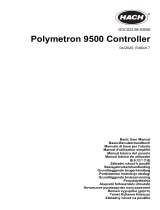 Hach Polymentron 9500 Basic User Manual
Hach Polymentron 9500 Basic User Manual
-
Hach SC200 Basic User Manual
-
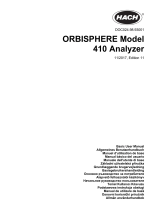 Hach ORBISPHERE 410 Basic User Manual
Hach ORBISPHERE 410 Basic User Manual
-
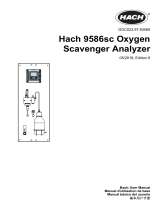 Hach 9586sc Basic User Manual
Hach 9586sc Basic User Manual
-
Hach SC200 Basic User Manual
-
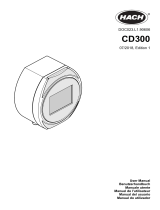 Hach CD300 Manuel utilisateur
Hach CD300 Manuel utilisateur
-
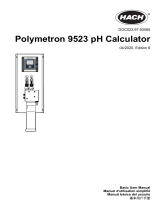 Hach Polymetron 9523 Basic User Manual
Hach Polymetron 9523 Basic User Manual
-
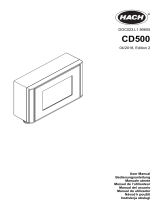 Hach CD500 Manuel utilisateur
Hach CD500 Manuel utilisateur
-
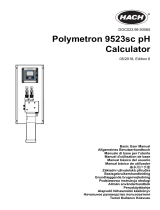 Hach Polymetron 9523sc pH Basic User Manual
Hach Polymetron 9523sc pH Basic User Manual
-
 Hach ORBISPHERE K-M1100 Basic User Manual
Hach ORBISPHERE K-M1100 Basic User Manual





























































































